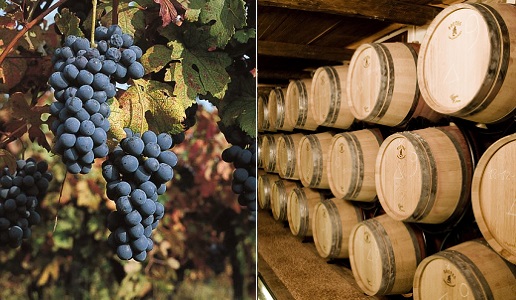Barbera and barriques

Maturing in barriques does justice to a wine and a varietal that had before played second fiddle to Barolo and Barbaresco.
When the first vintage of Bricco dell’Uccellone ’82 came out in 1984, the first Barbera matured in barriques, I remember I was very worried and called Giacomo Bologna. I had known Giacomo for years because my father, a furniture salesman, every year received a case of his wine as a gift from one of his suppliers, Mr, Niciforo. The case included Barbera d’Asti La Monello, which was slightly effervescent, and a Grignolino d’Asti which I though was very good. These were simple, immediate and easy-to-drink wines. They were produced by Braida di Rocchetta Tanaro, which at the time was owned by the volcanic and brilliant Giacomo Bologna, who died almost exactly 30 years ago.
Giacomo, I learned later, was a very dear friend of Gini Veronelli and Giorgio Grai and the idea of producing a “different” Barbera, one that was more complex having matured in barriques, actually came from Veronelli himself, who at the time was one of Giacomo’s biggest fans. “Giacomo – I told him on the phone – this wine may be very good but I find it a bit troubling because it is very so different from the idea I have of Barbera. Are you sure this is what you want?”. He was very determined in his reply: “Listen, I want to make a Barbera that is something else than just a common and rustic wine. I want to produce a great wine that can hold its own against the best in the world. I have even had it tasted by the famous enologist André Tschelitscheff and he thought it was fantastic. This is way to enhance its value, to make a wine that can stand alongside Barolo, Brunello and Sassicaia”. And this is how Barbera matured in barriques came to be.
The reason why I am saying all this is because I, who had such doubts it at the beginning, recently had to defend Barbera d’Asti and d’Alba and, above all, Nizza, produced using small barrels. Giacomo Bologna was an insightful visionary and his approach to producing Barbera has had great success in Italy and abroad, in effect reversing the reputation of this wine which had previously been considered a simple table wine.
Bologna’s approach was adopted by Michele Chiarlo with La Court, Vietti with Vigna Vecchia Scarrone, Coppa with Pomorosso, Elio Altare with Larigi, Marchesi Alfieri with l’Alfiera, Olim Bauda with Bauda, Franco Martinetti with Montruc, Cascina Chicco with Bric Loira and Gianfranco Alessandria with Vittoria. Giacomo himself used this method again for Bricco della Bigotta and Braida Ai Suma. Barbera d’Asti, d’Alba and Nizza, while having significant differences in style and origin, all have in common this different method of production that is used by wineries and producers the value of whom few can question, given the role they have played for winemaking in Piedmont. Have they betrayed the nature of Barbera? Or have they done justice to a wine and a varietal that before had simply played the role of being a pleasant and uncouth sparring partner for Barolo and Barbaresco? It was Giacomo Bologna who eliminated any doubts I may have had many ago and today, perhaps, the time has come to recall his vision and remember how things went.

 Italiano
Italiano







